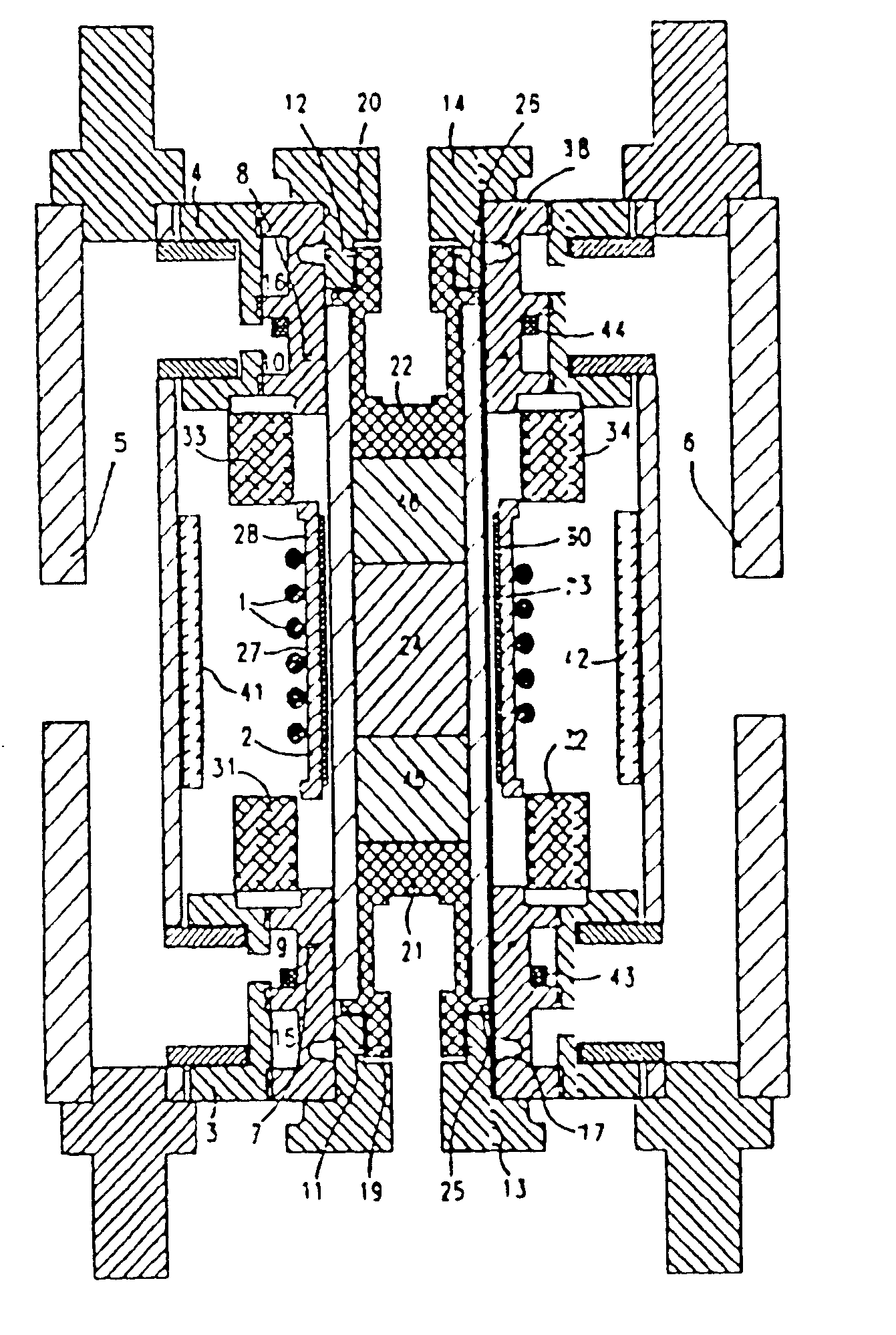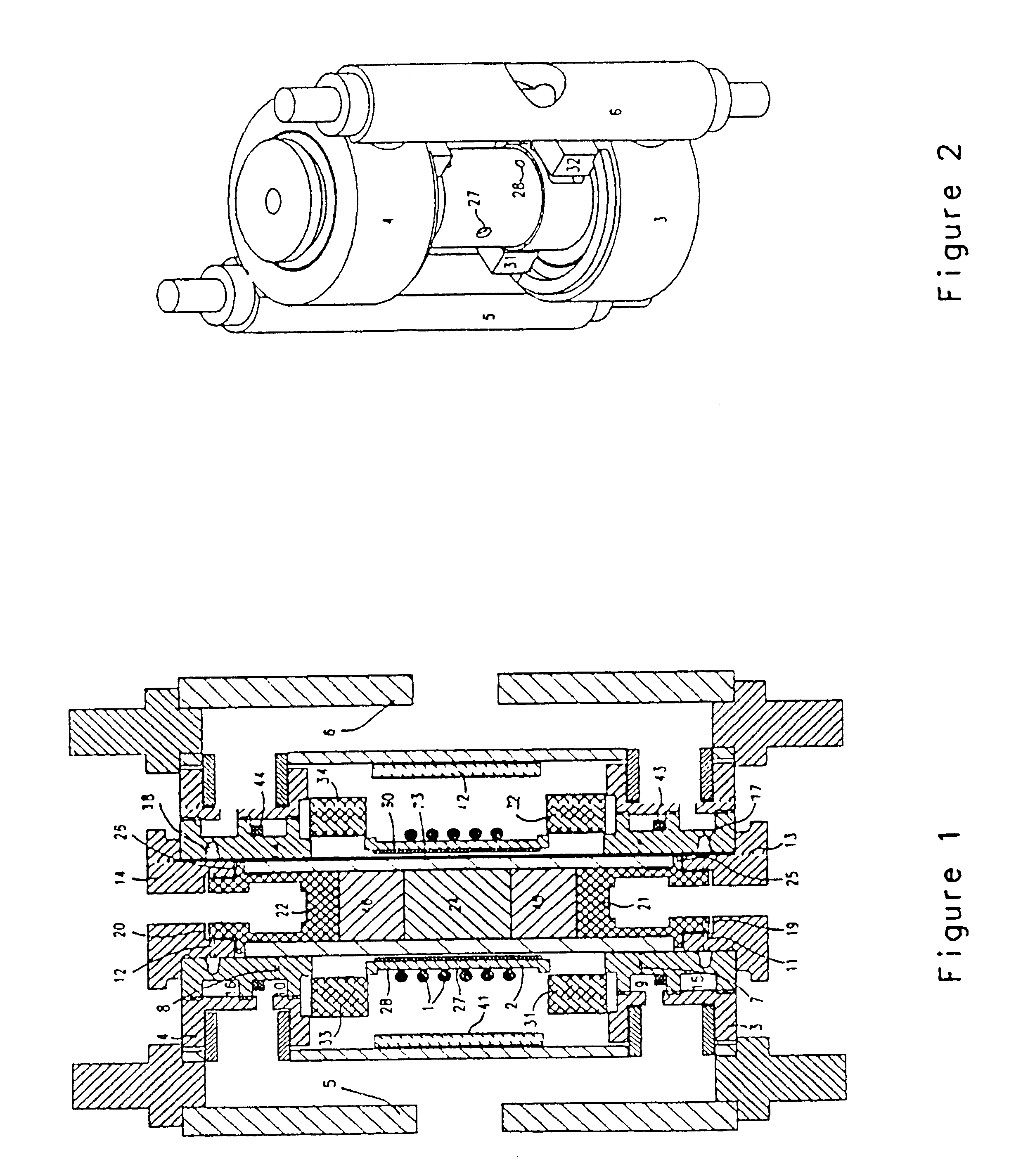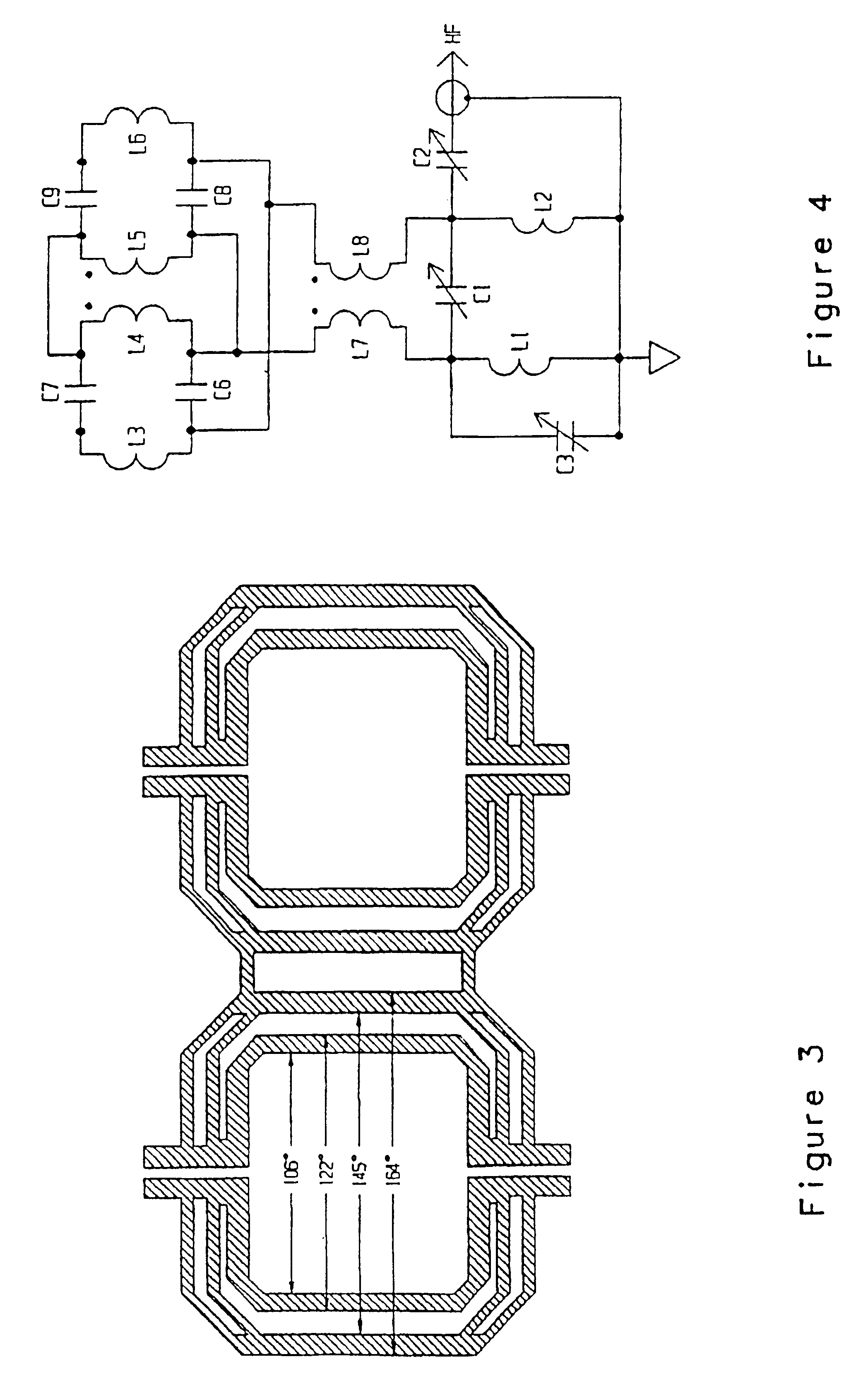Thermal buffering of cross-coils in high-power NMR decoupling
a cross-coil and nmr decoupling technology, applied in the field of high-power nmr decoupling, can solve the problems of inability to achieve this level of proton decoupling above 200 mhz in prior art coils and circuits, difficult to affix a coil like this to the inside of the coil, etc., and achieve the effect of high thermal conductivity
- Summary
- Abstract
- Description
- Claims
- Application Information
AI Technical Summary
Benefits of technology
Problems solved by technology
Method used
Image
Examples
Embodiment Construction
The manifolding modifications of the MAS spinner disclosed in FIGS. 1 and 2 permit improved access to the coil region, as required for practical manufacturing when two rf coils are used. Prior art supersonic NMR sample spinners similar to that of U.S. Pat. No. 5,508,615 have often been furnished with a solenoidal rf coil 1 on the outside (rather than inside, as shown in that patent) of the ceramic coilform 2 to simplify manufacturing, but the continuous (full-length) outer sleeve arrangement of the prior art is impractical when two coils are required. Separate manifolding sleeves 3, 4 at each end may be supplied with bearing gas through a bearing tube 5 on one side, and drive gas may be supplied through a drive tube 6 on the other side, leaving the central coil region readily accessible. To facilitate variable temperature operation and to improve magnetic homogeneity, a clamshell (split-cylinder) cover 41, 42 (not shown in FIG. 2) with suitable lead holes may be removably affixed ar...
PUM
 Login to View More
Login to View More Abstract
Description
Claims
Application Information
 Login to View More
Login to View More - R&D
- Intellectual Property
- Life Sciences
- Materials
- Tech Scout
- Unparalleled Data Quality
- Higher Quality Content
- 60% Fewer Hallucinations
Browse by: Latest US Patents, China's latest patents, Technical Efficacy Thesaurus, Application Domain, Technology Topic, Popular Technical Reports.
© 2025 PatSnap. All rights reserved.Legal|Privacy policy|Modern Slavery Act Transparency Statement|Sitemap|About US| Contact US: help@patsnap.com



